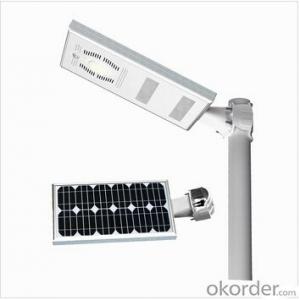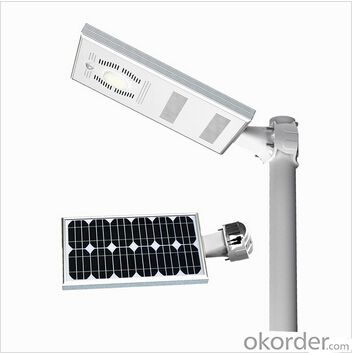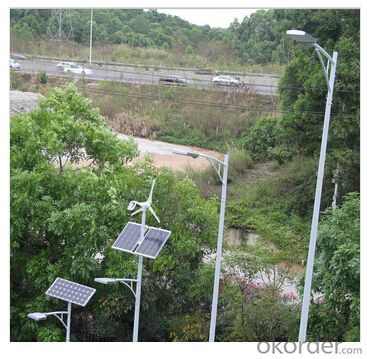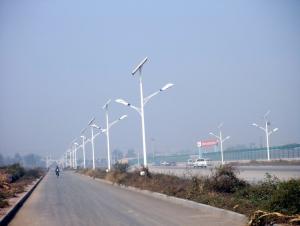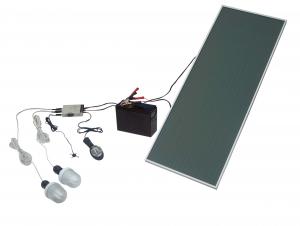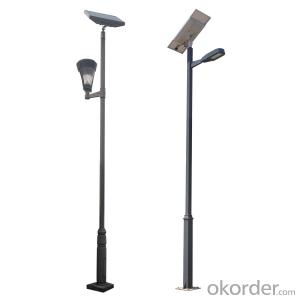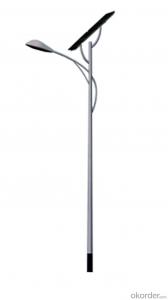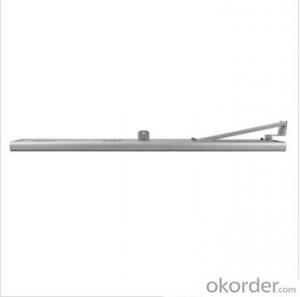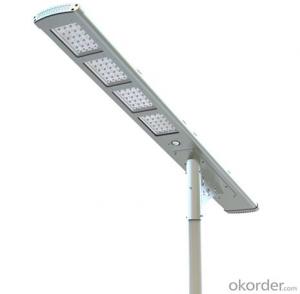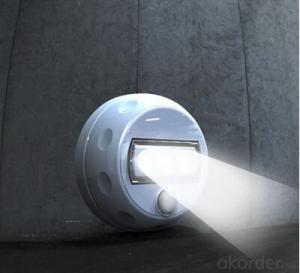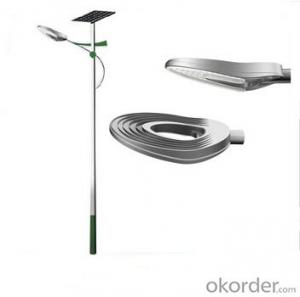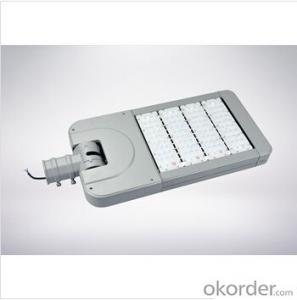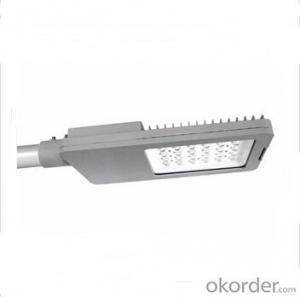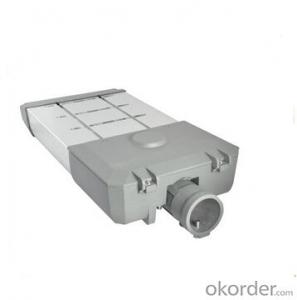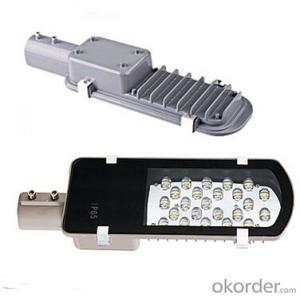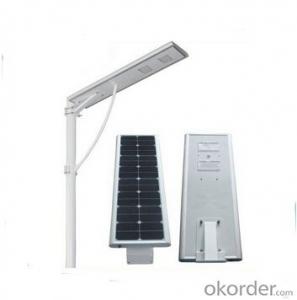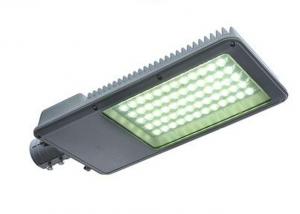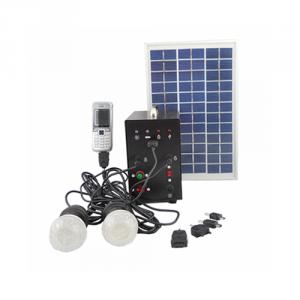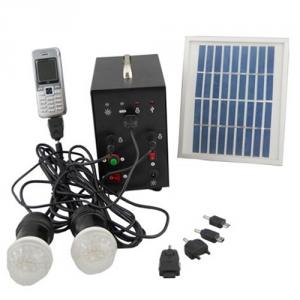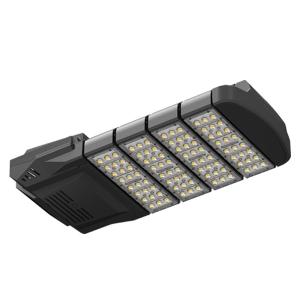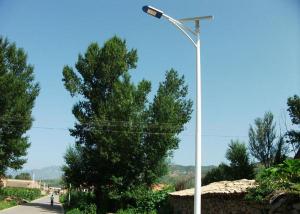Ring Solar Light - 12V 5W Solar Street Light and Save Energy - 2024 New Products
- Loading Port:
- Shanghai
- Payment Terms:
- TT OR LC
- Min Order Qty:
- 30 unit
- Supply Capability:
- 30000 unit/month
OKorder Service Pledge
OKorder Financial Service
You Might Also Like
Solar Lantern
The lamp is made by whole aluminum die casting,the model is succeed shaped in first time, after precision polishing then electrostatic spraying,transmitting cover is made by toughened glass.
Feature:
a.With Patent ,CE & ROHS certificates
b.Can be charged by sunlight and AC charger
c.With USB socket output ,can charge for all kinds of mobiles
d.Adjustable brightness to meet your lighting hours requirements
e.Large area radiation plate is good for heat spread from LED base
f.Portable LED light with an integrated solar panel, easy to take and use
Specification:
Solar panel | Maximum Power | 18V10W ( high-efficient single-crystal solar cell ) | ||
Lifetime | 25 years | |||
Battery | Type | Lithium Battery(12.8V / 4AH ) | ||
Lifetime | 5 years | |||
LED light (without Thermal infrared human body sensor) |
Maximum Power
| 12V 5W | ||
LED chip | Epistar with high brightness | |||
Lumen | 500-550lm | |||
lifetime | 50000 hours | |||
viewing angle | 120° | |||
charging time | solar battery charging | 6 hours (Strong sunlight) | ||
working time | full power | >12hours | ||
power-saving mode | >24 hours | |||
working temperature | -30℃~+70℃ | |||
Luminous Flux | 6000k | |||
Materials | Aluminium Alloy | |||
Certification | CE / ROHS | |||
Warranty | 2 years | |||
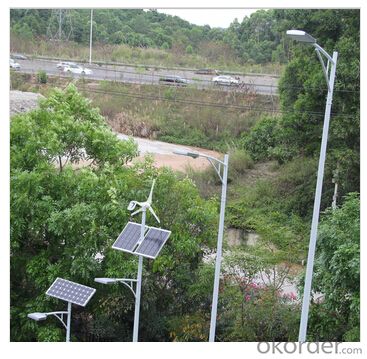
FAQ
1, What’s price per product ?
A: It’s depends on the quantity, delivery date and payment terms of the order. We can talk further about the detail price issue. Our products is high quality with lower price level.
2, How to make payment?
We accept T/T or L/C.
3, What is your lead time?
Generally 1-5 weeks depends on the order quantity and your specific requirements.
4, Can you do OEM for us?
Yes, we can.
5, How do you pack your products?
We have rich experience on how to pack the panels to make sure the safety on shipment when it arrives at the destination.
- Q: Can solar lights be used for landscape lighting?
- Yes, solar lights can indeed be used for landscape lighting. Solar lights are a popular and eco-friendly option for illuminating outdoor spaces such as gardens, pathways, and patio areas. They are designed to harness sunlight during the day and convert it into stored energy, which is then used to power the lights during the night. Solar lights are easy to install, require no electrical wiring, and provide a cost-effective and sustainable solution for landscape lighting.
- Q: Are solar lights suitable for lighting up large areas?
- Solar lights are generally not suitable for lighting up large areas. While they can be effective for illuminating small areas such as pathways, gardens, or driveways, they are not designed to provide the same level of brightness and coverage as traditional electric lights. Solar lights rely on sunlight to charge their batteries, and their power output is limited by the size and efficiency of their solar panels. This means that they may not be able to generate enough light to adequately illuminate larger spaces. Additionally, solar lights typically have a lower run time compared to electric lights, especially during cloudy or rainy days, further limiting their suitability for large areas. Therefore, if you require extensive lighting for a large area, it is recommended to explore other lighting options such as electric lights, which can provide the necessary brightness and coverage.
- Q: Are solar lights resistant to animal or pet damage?
- Solar lights are generally designed to withstand outdoor elements and are resistant to animal or pet damage to some extent. However, the level of resistance may vary depending on the specific brand and model of the solar light. Most solar lights are made with durable materials such as weather-resistant plastic or metal, which can withstand mild animal or pet interactions. They are typically designed to be installed at a height that is not easily accessible to animals or pets, reducing the chances of damage. However, it is important to note that some animals, particularly larger or more determined ones, may still be able to cause damage to solar lights. For example, larger dogs may be able to chew or knock over solar lights if they are within their reach. Similarly, some animals may be attracted to the lights and try to scratch or play with them, potentially causing damage. To minimize the risk of animal or pet damage to solar lights, it is advisable to install them in areas that are less accessible to animals, such as high up on poles or walls. Additionally, choosing solar lights that have sturdy construction and are specifically marketed as being resistant to animal damage can also help mitigate potential issues. Overall, while solar lights are generally designed to be resistant to animal or pet damage, it is important to consider the specific circumstances and take appropriate precautions to minimize any potential risks.
- Q: How do solar lights compare to generator-powered lighting systems?
- The advantages and disadvantages of solar lights and generator-powered lighting systems vary, depending on specific needs and circumstances. Solar lights, which are powered by the sun, offer a sustainable and environmentally-friendly option. They are simple to install and require minimal maintenance, as they lack any moving parts. In addition, solar lights do not emit greenhouse gases or create noise pollution, making them ideal for outdoor use in residential areas or public spaces. Conversely, generator-powered lighting systems generally offer greater power and a higher intensity of light compared to solar lights. They are often used in large outdoor events, construction sites, or areas where a substantial amount of light is required for an extended duration. Generators can be fueled by diesel, natural gas, or gasoline, providing a dependable source of energy even in areas without access to electricity. However, they necessitate fuel and regular maintenance, which can be expensive and may contribute to air and noise pollution. Regarding cost, solar lights entail a higher initial investment, as they require the purchase of solar panels and batteries. Nevertheless, they have lower operating costs in the long run, as they rely on free solar energy. Generator-powered lighting systems have lower initial costs but higher ongoing expenses, including fuel and maintenance. In terms of reliability, solar lights are dependent on the availability of sunlight, so they may not provide consistent lighting on cloudy or rainy days, or in areas with limited sunlight. On the other hand, generator-powered lighting systems can function regardless of weather conditions, as long as there is fuel available. To summarize, solar lights offer a sustainable and cost-effective solution for outdoor lighting, particularly in areas with access to sunlight. They are easy to install, require minimal maintenance, and have no negative impact on the environment. Generator-powered lighting systems, on the other hand, offer more power and reliability but come with higher costs and environmental concerns. Ultimately, the choice between the two depends on the specific requirements and circumstances of the lighting project.
- Q: Are solar lights easy to uninstall or remove?
- Solar lights are typically simple to uninstall or remove. The majority of solar lights have a stake or base that can be effortlessly inserted into the ground or attached to a wall. To remove them, all you have to do is reverse the installation process. If the lights have stakes, you can simply extract the stake from the ground with care, while for wall-mounted lights, you can unscrew them from their brackets. Furthermore, as solar lights don't require any electrical connections, there's no need to be concerned about disconnecting wires or dealing with intricate installations. In general, solar lights are user-friendly and can be easily uninstalled or removed whenever needed.
- Q: Can solar lights be used in areas with high levels of air pollution?
- Despite high levels of air pollution, solar lights can still be utilized, although their effectiveness may be diminished. The conversion of sunlight into electricity by solar panels can be obstructed by air pollution, resulting in reduced charging and operating durations for the lights. Nevertheless, solar lights are engineered to be efficient and capable of operating in areas with a certain degree of air pollution. It is crucial to routinely clean the solar panels to eliminate any dust or particles that may accumulate and further impede their performance. Moreover, opting for high-quality solar lights equipped with efficient panels can assist in mitigating the impact of air pollution on their functionality.
- Q: Are there any fire hazards associated with solar lights?
- Yes, there can be fire hazards associated with solar lights, although they are generally considered to be safer than traditional electric lights. Solar lights typically use LED bulbs, which generate less heat compared to incandescent bulbs, reducing the risk of fire. However, if the solar lights are poorly manufactured or improperly installed, there is a possibility of electrical malfunctions that could lead to fires. Additionally, if the solar panels or batteries used in the lights are damaged or faulty, they can overheat and potentially cause a fire. To minimize the risk, it is important to purchase solar lights from reputable manufacturers, follow the installation instructions carefully, and regularly inspect and maintain the lights to ensure they are in good working condition.
- Q: Are there solar lights with adjustable color temperatures?
- Yes, there are solar lights available with adjustable color temperatures. These lights typically feature multiple color temperature options, allowing users to switch between warm white, cool white, and sometimes even RGB colors to create different lighting moods and ambiance.
- Q: Can solar lights be used in coastal areas with saltwater exposure?
- Solar lights can indeed be utilized in coastal areas where they are exposed to saltwater. Nevertheless, one must pay heed to selecting solar lights explicitly engineered to endure the corrosive impact of saltwater. Seek out solar lights crafted from top-notch materials such as stainless steel or corrosion-resistant aluminum. These substances exhibit greater resilience against rust and corrosion inflicted by saltwater. Furthermore, adhering to routine maintenance and cleaning routines for the solar lights can aid in prolonging their lifespan and guaranteeing optimal performance amidst coastal surroundings.
- Q: Are solar lights suitable for illuminating parking lots?
- Yes, solar lights are suitable for illuminating parking lots. Solar lights are powered by sunlight, which makes them an environmentally friendly and cost-effective option for outdoor lighting. They can provide sufficient illumination for parking lots, ensuring safety and visibility for vehicles and pedestrians. Additionally, solar lights are easy to install and require minimal maintenance compared to traditional electric lights. They can be a reliable and sustainable lighting solution for parking lots, reducing energy consumption and operating costs.
Send your message to us
Ring Solar Light - 12V 5W Solar Street Light and Save Energy - 2024 New Products
- Loading Port:
- Shanghai
- Payment Terms:
- TT OR LC
- Min Order Qty:
- 30 unit
- Supply Capability:
- 30000 unit/month
OKorder Service Pledge
OKorder Financial Service
Similar products
Hot products
Hot Searches
Related keywords
